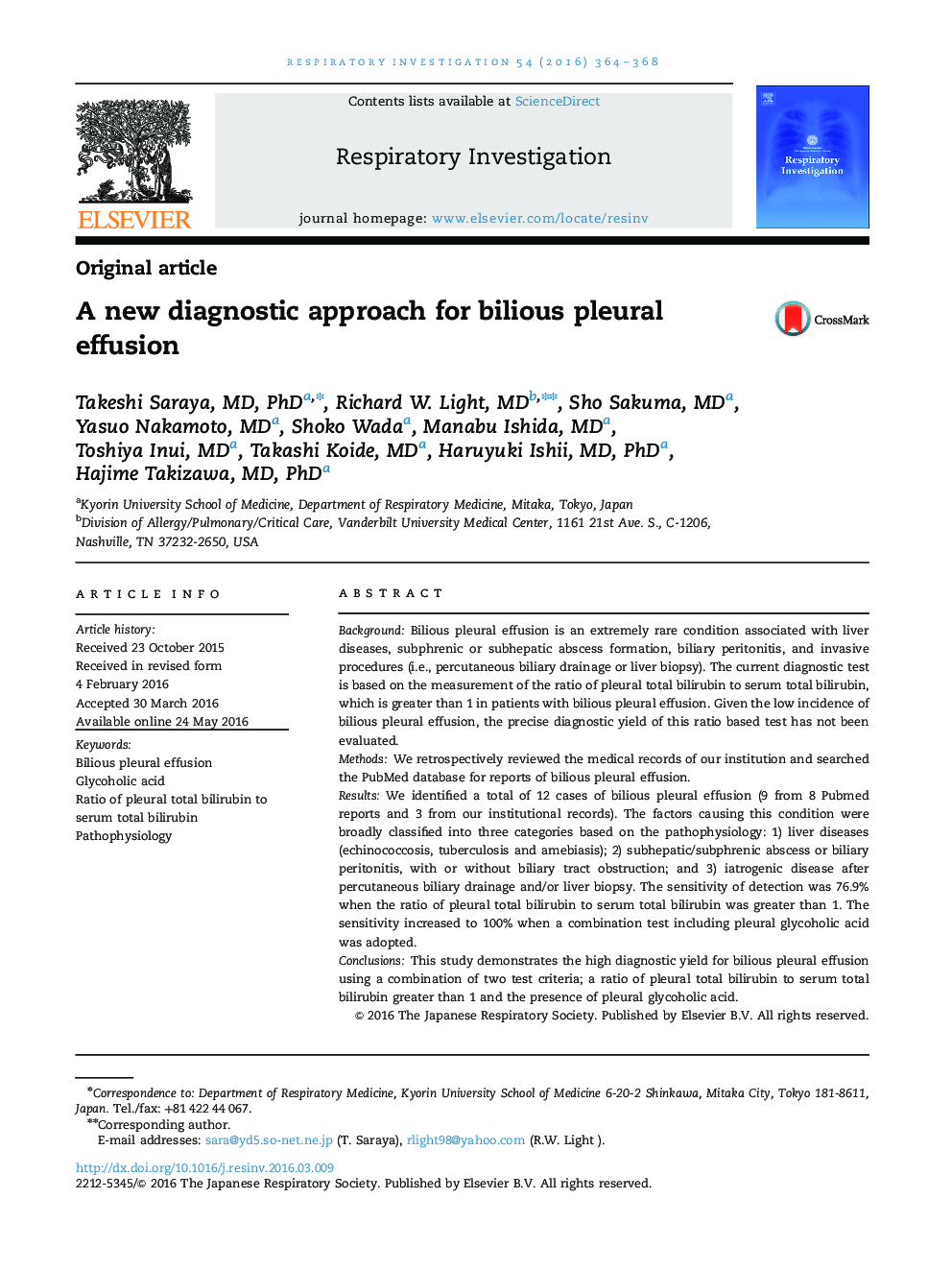| Article ID | Journal | Published Year | Pages | File Type |
|---|---|---|---|---|
| 3418541 | Respiratory Investigation | 2016 | 5 Pages |
BackgroundBilious pleural effusion is an extremely rare condition associated with liver diseases, subphrenic or subhepatic abscess formation, biliary peritonitis, and invasive procedures (i.e., percutaneous biliary drainage or liver biopsy). The current diagnostic test is based on the measurement of the ratio of pleural total bilirubin to serum total bilirubin, which is greater than 1 in patients with bilious pleural effusion. Given the low incidence of bilious pleural effusion, the precise diagnostic yield of this ratio based test has not been evaluated.MethodsWe retrospectively reviewed the medical records of our institution and searched the PubMed database for reports of bilious pleural effusion.ResultsWe identified a total of 12 cases of bilious pleural effusion (9 from 8 Pubmed reports and 3 from our institutional records). The factors causing this condition were broadly classified into three categories based on the pathophysiology: 1) liver diseases (echinococcosis, tuberculosis and amebiasis); 2) subhepatic/subphrenic abscess or biliary peritonitis, with or without biliary tract obstruction; and 3) iatrogenic disease after percutaneous biliary drainage and/or liver biopsy. The sensitivity of detection was 76.9% when the ratio of pleural total bilirubin to serum total bilirubin was greater than 1. The sensitivity increased to 100% when a combination test including pleural glycoholic acid was adopted.ConclusionsThis study demonstrates the high diagnostic yield for bilious pleural effusion using a combination of two test criteria; a ratio of pleural total bilirubin to serum total bilirubin greater than 1 and the presence of pleural glycoholic acid.
